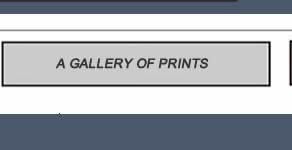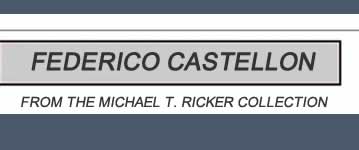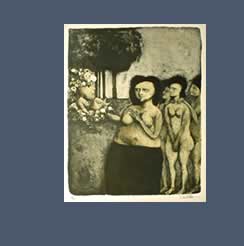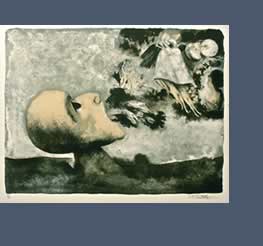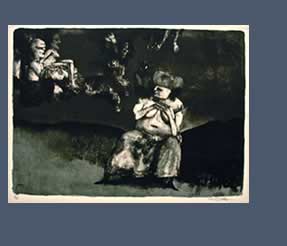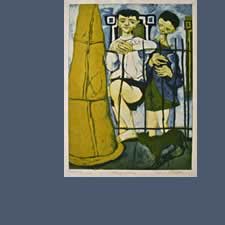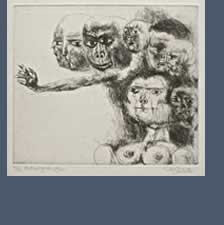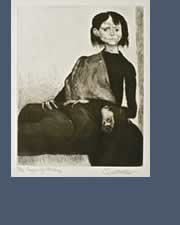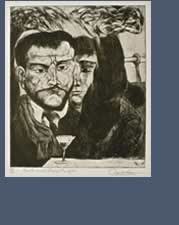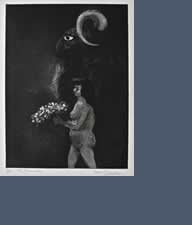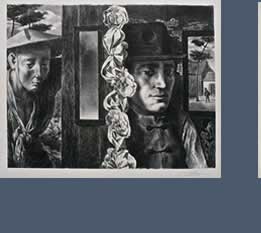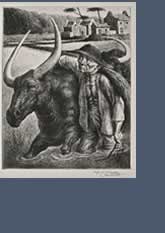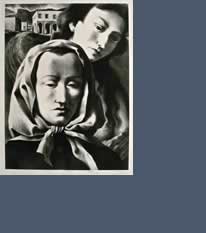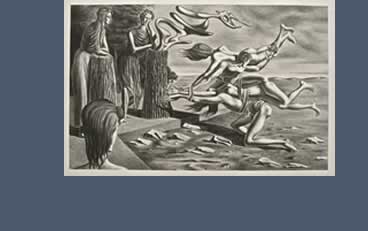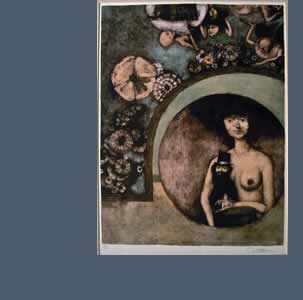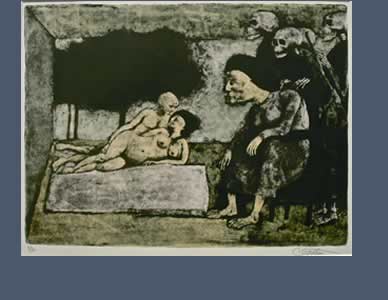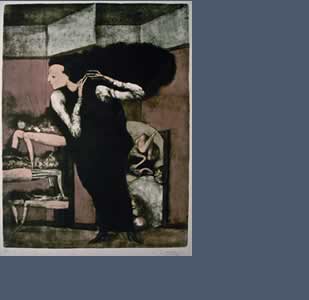| Oral history interview with Federico Castellon, 1971 Aprl 7-14, Archives of American Art, Smithsonian Institution
To go back to the "Mask of the Red Death" portfolio again, you've done series of prints and suites and things?
FC: Oh, yeah. The first one I did was on Ghent, twelve lithographs, etchings on China. That was primarily because while I was off in Calcutta on furlough one time, we had a flood in China and all my drawings, dozens and dozens and dozens of them that were in my tent . . . . a We had a bureau which we had made for peanuts, and I kept all my drawings and films in it, you know. Sundays I'd take off in a jeep, go out down the road and make drawings, or out in the rice paddies, or whatever. In the flood that occurred while I was in Calcutta, all my tent mates saved my helmet, helmet liner, carbine, all my G.I. equipment. That was, ye Gods, dispensable as all hell, that they saved. All my art work went off in the flood, so I came back, got out of the Army and decided what happens to all these experiences. And I began remembering some of the drawings that I did, picked twelve, put them into a portfolio form. It's not the best portfolio I've made, but that was the first portfolio series that I did. I guess I did a series of drawings but it wasn't published as a series, it was just kept in a folder.
PC: Do you like the concept of series, suites or portfolios or . . . ?
FC: Yeah, yeah. But I don't think they should have a limit. The limit should be established by the lack of enthusiasm. When your enthusiasm has given out then, you should . . . . That's the limit, that's the end of the portfolio. And right now, as I may have told you the last time, I've been involved in this series of portfolios that will be coming out I hope in about a year, semi-annual portfolios of twenty etchings.
PC: Well, you were just speaking about . . . . Do you do lithographs and etchings and the whole thing? I mean, don't you . . . . I mean all the graphics, not woodcuts?
FC: Not woodcuts. I've tried and I've done linoleum cuts, woodcuts, it's a little too unbidding. With me it's almost a slight battle with it. Also, I find that with woodcuts the aesthetic nature of the medium itself is a thing that, you know, projects itself on the artist and if the artist . . . . Even a bad artist can look good in woodcuts.
PC: Oh, it has a certain dramatic quality.
FC: It has. I mean it's . . . . To make a woodcut most effective means to make the woodcut make itself. Now you can't say that about an etching or lithograph. If you don't bring something to it, you're lost.
PC: Well, a lithograph can become very painterly.
FC: Oh, yeah. Yeah, it can. It's the artist responsible for . . . . The nature of the wood is so, that it's a beautiful thing, I think the German expressionists probably appreciated that more than anybody else. They knew the nature of the wood and they allowed it, they allowed the wood to determine it's own quality, unlike say the Durers and the others who . . . . Fortunately the artists didn't do the woodcutting itself otherwise they would never had evolved that way, the artist not being involved in anything more than making drawings, painting, whatever, did whatever they pleased and let the craftsmen cut the wood, otherwise we may have had Germany expressionism as early as the early fifteen hundreds. |

